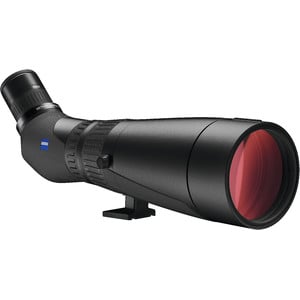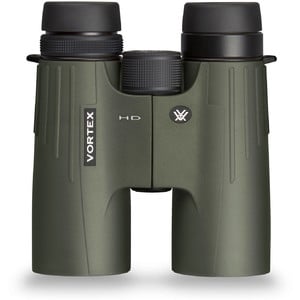
Every year the first weekend in March sees the international weapons exhibition and the Outdoor Classics. This trade show, which experts simply refer to as IWA, is the right time for users of binoculars, spotting scopes, rifle scopes, night vision devices, wildlife cameras and range finders to become acquainted with the latest and most important product developments. We obviously attended the trade show as well to have a look at the innovations. Here is a small excerpt of the most interesting products we will see in the near future.
The most important innovation for any nature watcher is most likely the market launch of Swarovski Optik with their binocular BTX system for lens modules. This enables relaxing nature watching with both eyes. The eye relief can be adjusted, and even a difference in the acuity of vision between both eyes can be corrected. The adjustable forehead support stabilises the image even more. The BTX is available individually or in combination with one of the three lens modules as 30×65, 30×85 or 35×95.

If this magnification is not enough, you can even use the new ME 1.7 teleconverter between the lens and eyepiece modules. This also works with eyepiece modules ATX and STX. This increases the magnification by the factor 1.7, i.e. a 30x magnification then becomes a 51x magnification. Apart from that there is also a new PTH tripod head. To nature photographers such a construction is known as a “gimbal head”. Especially with moving targets this tripod head enables a soft resonant movement, e.g. for water birds slowly swimming past or birds of prey circling high in the sky. And a new balance rail, BR referred to in short, will soon be available. It serves the purpose of compensating the weight on a tripod head and enables the displacement of the centre of gravity in the longitudinal axis. This product will be available for delivery from the beginning of May.

LEICA has been using range-finding technologies in binoculars and monoculars for 25 years. This is the reason for the launch of a special edition of the Geovid HD-B 8×42 and 10×42 and of the Rangemaster CRF 2000-B in 2017. All models are dark green, and the two binoculars come in a loden cloth bag. The special editions are expected to be available from second half of the year. In only a few days the new accessories for binoculars and range finders will be available: For the APO-Televid 82 spotting scope there is now once again a stay-on-case available, which can be ordered in new colour combinations.

ZEISS introduces the successors of the popular Victory Compact-models: the Victory Pockets will be available in the future in 8×25 and 10×25. A bigger front lens diameter on the 8X magnifying model and high-quality FL-glass, which was previously only used in the 32 models, characterise these optical instruments. Apart from that ZEISS has also enlarged the field of view; it now stretches to 130 metres for the 8×25, and the close range was reduced to 1.9 metres. Unfortunately, the carrying case has become considerably bigger and will no longer fit into trouser pockets. However, these products will be available in our shop in a couple of weeks.
Steiner presents a new, light-weight pair of binoculars with range finder: The LRF 1700 in the variants 8×30 or 10×30 is ideal for mountain hunting or on hunting trips. Hunting in this case primarily takes place under sufficient daylight, so that the benefit of the weight overcomes the large aperture. The measuring range reaches up to max. 1700 metres. This is definitely unrealistic under hunting-related aspects, but shows what is technically possible. Apart from that there is also a new pair of roof binoculars from the Safari UltraSharp-series. As a 10×42 it is ideal for stalk hunting or when taking a walk through the woods.

Starting today, we can also offer you the complete range of FUJINON binoculars. While these are aimed more at astronomers or water sports enthusiasts, one or two products in the FMT-series may also be of interest to hunters. These high-quality Porro-system binoculars with single eyepiece focusing are particularly interesting for a hunting session during the night. Once they have been adjusted for your personal needs, nothing else needs to be adjusted for distances from approx. 25 metres all the way to infinite. Thanks to the field flattener eyepieces they provide you with an image which is sharp right to the edge. The legendary robustness and leak tightness of these binoculars even meets the stringent requirements of US authorities and, as a result, should withstand any hunting session in the snow or rain without any problems. For ornithologists, who have to consider the weight, the two KF-models might be of interest. And the Techno-Stabi feature compensates the restlessness of the hand electronically.

In the field of night vision devices we can introduce some new products, too: The current trend is thermal imaging cameras! In contrast to classical night vision devices, not only is the infrared light amplified, which is invisible to the naked eye, but also the heat radiated by an animal or a human being. The image therefore is not as detailed as when taken with generation 2 cameras or higher, but you can also use the device in case of a light fog. A sweat trail can be followed for a few seconds.
In our shop you will now find some products of this category: The best-known devices will surely be of the FLIR brand. In addition to the beginners model, Scout TK Compact, we also offer the Scout II model. This model is available with a resolution of 240, 320 or 640 pixels. In the near future you will also find device of the Scout III series in our shop.

Leupold is now also offering a thermal imaging camera. The design is quite similar to the eyepiece of a rifle scope and, in addition, it is very handy and light. The LTO tracker, however, is not suitable for mounting on weapons, as the very sensitive electronics would not withstand the recoil of a rifle.
New to our product range are also the devices offered by Seek Thermal. These are available as an extension module for your Android or Apple smartphone or as a Reveal-series in form of a hand-held device with display screen.

During the second half of the year we expect further wildlife cameras and rifle scopes from Bushnell and Leupold Tasco also has plans to thoroughly revise their range of binoculars. However, these products will probably only be available in autumn.
Be clever and get your hands on these IWA innovations today!










































